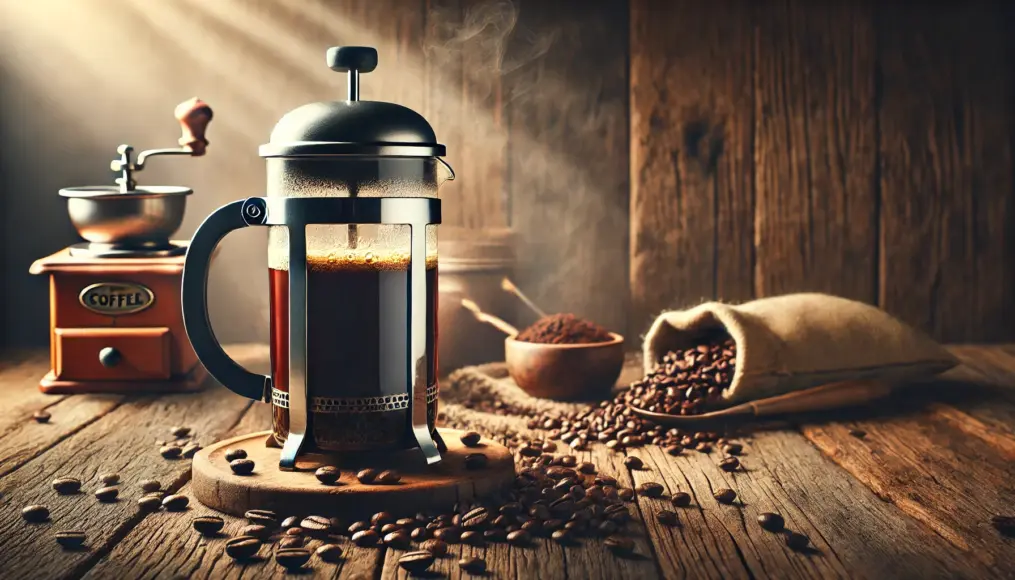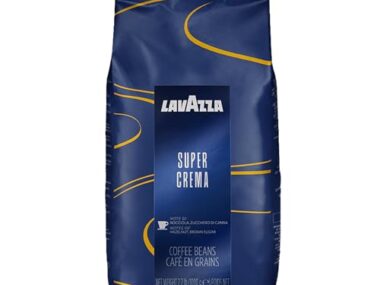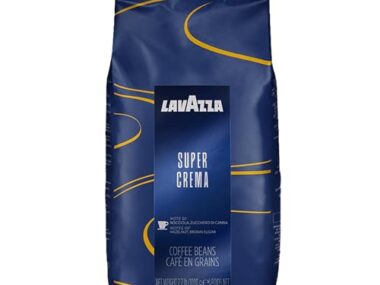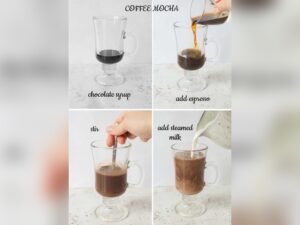Choosing the right beans is key to a great brew. The best beans enhance flavor and aroma.
But how do you find these beans? Brewing coffee is an art. The beans you select make a huge difference. They shape the taste, texture, and even the mood of your coffee experience. With so many options, it can be overwhelming.
Do you go for a bold roast or a light one? Should you choose beans from Colombia or Ethiopia? Each choice impacts your brew’s final profile. Understanding the basics can help you make informed decisions. This guide will walk you through the factors to consider. From origin to roast type, we’ll help you discover the beans that best match your taste and brewing style. Get ready to elevate your coffee game with the perfect beans.
Types Of Coffee Beans
Choosing the right coffee beans is crucial for a perfect brew. The flavor, aroma, and overall experience depend heavily on the type of beans you select. Coffee beans come in various types, each offering unique characteristics. Understanding these differences is essential for making the best choice for your taste and brewing method. Let’s explore the most popular types: Arabica, Robusta, and Liberica.
Arabica Beans
Arabica beans are the most popular coffee beans worldwide. They are known for their smooth and mild flavor. These beans grow at high altitudes and require specific climate conditions. Arabica beans have a sweeter taste with hints of fruit and sugar. Their acidity level is higher than other beans, which adds to their complexity.
Arabica beans are typically more expensive due to their delicate growing conditions. The flavor profile of Arabica includes:
-
Sweetness with hints of fruit.
-
Higher acidity compared to other beans.
-
Notes of chocolate and nuts.
These beans are perfect for those who prefer a mild and aromatic cup of coffee. They are often used in specialty coffees and are ideal for brewing methods like pour-over and French press.
Robusta Beans
Robusta beans are known for their strong and bold flavor. They have a higher caffeine content compared to Arabica. This makes them more bitter and less sweet. Robusta beans are grown at lower altitudes and are more resilient to pests and diseases. Their flavor is often described as earthy and somewhat harsh.
The characteristics of Robusta beans include:
-
Higher caffeine content, contributing to a bitter taste.
-
Notes of earthiness and wood.
-
Less acidity than Arabica beans.
Robusta beans are often used in espresso blends. They provide a thick crema and are favored for their intense flavor. If you enjoy a strong and bold cup of coffee, Robusta is a great choice.
Liberica Beans
Liberica beans are unique and less common than Arabica and Robusta. They have a distinct flavor that is described as floral and fruity. Liberica beans are larger and have an irregular shape. Their taste is bold and full-bodied, with a lingering aroma.
The key characteristics of Liberica beans include:
-
Distinct floral and fruity notes.
-
A bold and full-bodied taste.
-
Lingering aroma.
Liberica beans are often used in blends to add complexity. They are ideal for those who seek unique and adventurous flavors in their coffee. If you want to try something different, Liberica beans can provide an exciting new experience.

Credit: cafely.com
Flavor Profiles
Choosing the best beans for brewing can enhance your coffee experience. The flavor profile of coffee beans is essential. It helps you enjoy the unique tastes each variety offers. Understanding flavor profiles allows you to select beans that suit your preferences. Whether you like fruity, nutty, or spicy notes, there’s a bean for everyone. Let’s explore these fascinating flavor profiles.
Fruity Notes
Fruity notes in coffee beans offer a refreshing taste. These beans often have hints of berries, citrus, or stone fruits. Many coffee lovers enjoy the bright and tangy flavors these beans provide. It’s common to find fruity notes in beans from African regions like Ethiopia and Kenya.
Fruity coffee beans can have:
-
Berry flavors, like blueberry or raspberry
-
Citrus hints, such as orange or lemon
-
Stone fruit tastes, like peach or apricot
These beans are often light to medium roast. This roasting level preserves the natural fruit flavors. For a vibrant and lively cup, fruity notes are a great choice.
Nutty Undertones
Nutty undertones provide a smooth and comforting experience. These beans often have hints of almonds, hazelnuts, or walnuts. They are popular among those who prefer a more mellow flavor.
Nutty coffee beans can include:
-
Almond flavors, offering a sweet and mild taste
-
Hazelnut notes, providing a rich and creamy texture
-
Walnut hints, delivering a slightly bitter finish
These beans are typically medium to dark roast. The roasting process enhances the nutty characteristics. It’s ideal for those who enjoy a warm and soothing brew.
Spicy Flavors
Spicy flavors in coffee add an exciting twist. These beans might have hints of cinnamon, clove, or pepper. Such flavors create a bold and adventurous cup of coffee.
Spicy coffee beans might feature:
-
Cinnamon notes, adding warmth and sweetness
-
Clove hints, offering a unique and aromatic touch
-
Pepper flavors, providing a sharp and invigorating taste
Beans with spicy flavors are often medium to dark roast. The roasting brings out the complex spices within the beans. Perfect for those seeking a distinctive and lively coffee experience.
Roast Levels
Choosing the right beans for brewing is crucial to enjoying a perfect cup of coffee. The roast level of coffee beans significantly influences the flavor, aroma, and overall experience of the brew. Each roast level offers a unique taste profile that can cater to different preferences. Understanding these differences can help you select the best beans for your brewing method and taste. Whether you prefer a mild and fruity coffee or a bold and rich flavor, there’s a roast level tailored just for you. Let’s explore the characteristics of light, medium, and dark roasts to help you make an informed decision.
Light Roast
Light roast beans are known for their delicate and bright flavors. They offer a higher acidity and maintain more of the original flavors of the coffee bean. These beans are roasted for a shorter period, which means they retain more of the coffee’s natural characteristics.
Common attributes of light roast beans include:
-
Fruity and floral notes
-
Light body with a smooth finish
-
Preserved origin flavors
-
High caffeine content compared to darker roasts
Light roast beans are ideal for those who enjoy complex and nuanced flavors. They pair well with manual brewing methods like pour-over and AeroPress. For the best results, choose beans from single-origin sources, as they often highlight unique regional characteristics.
Medium Roast
Medium roast beans strike a balance between acidity and body. They offer a well-rounded flavor profile that appeals to many coffee lovers. These beans are roasted to a medium brown color and often have a slightly oily surface.
Characteristics of medium roast beans:
-
Balanced acidity and sweetness
-
Rich and full-bodied flavor
-
Hints of chocolate and caramel
-
Moderate caffeine level
Medium roast is versatile and works well with various brewing methods, including drip coffee makers and French presses. It’s a popular choice for those who enjoy a smooth and flavorful cup without overpowering bitterness. If you’re new to coffee, medium roast is a great place to start.
Dark Roast
Dark roast beans are known for their bold and intense flavors. They have a low acidity and a heavy body, making them perfect for those who prefer a strong coffee taste. These beans are roasted longer, resulting in a dark brown or black color.
Key features of dark roast beans:
-
Smoky and earthy notes
-
Bold and robust flavor
-
Low acidity
-
Lower caffeine content than lighter roasts
Dark roast beans are ideal for espresso and other strong coffee drinks. They provide a rich and full-bodied experience that many coffee enthusiasts love. If you enjoy coffee with a strong aroma and deep flavors, dark roast is the choice for you.
Freshness Matters
Brewing the perfect cup of coffee starts with the right beans. Freshness is a key factor that impacts the flavor and aroma of your brew. Coffee enthusiasts understand the importance of selecting beans that are not only high-quality but also fresh. The journey to a delightful coffee experience begins by understanding what makes beans fresh and how to maintain that freshness. Let’s explore how to choose the best beans for brewing, focusing on the significance of their purchase date and effective storage tips.
Purchase Date
Buying coffee beans at the right time is crucial for freshness. The purchase date can tell you a lot about the quality and taste of the beans. Here are some essential points to consider:
-
Check the roast date: Always look for beans with a roast date on the packaging. This indicates when the beans were roasted.
-
Aim for freshness: The fresher the beans, the better the flavor. Try to buy beans that were roasted within the last two weeks.
-
Avoid old stock: Beans that have been sitting on the shelf for a long time lose their aroma and taste.
Consider seasonal beans for more vibrant flavors. Some beans are available only during certain months. This can impact their taste and freshness. For a more detailed understanding, here’s a simple table showing optimal purchase timelines:
|
Bean Type |
Best Purchase Time |
|---|---|
|
Arabica |
Year-round |
|
Robusta |
Spring and Summer |
Storage Tips
Proper storage is essential to maintain the freshness of your coffee beans. Here are some tips to help you store your beans effectively:
-
Use airtight containers: Oxygen can degrade coffee beans quickly. Store your beans in airtight containers to keep them fresh.
-
Keep away from light: Exposure to light can alter the taste of your beans. Use opaque containers or store them in a dark place.
-
Avoid heat and moisture: Both can ruin the flavor of coffee beans. Store your beans in a cool, dry place.
Refrigeration is not recommended as it can cause condensation. Instead, find a stable place in your kitchen. The shelf life of coffee beans can be extended with proper storage techniques. Remember, freshness is not just about the purchase date but how you handle the beans after buying them.
Single Origin Vs. Blends
Choosing the right coffee beans is crucial for brewing a perfect cup. Two main types are Single Origin and Blends. Single Origin beans come from one place. This place could be a country, region, or even a specific farm. Blends, on the other hand, are a mix of beans from different places. Each type has its own unique flavor and benefits. Knowing the differences helps coffee lovers make the best choice. This guide explores both options to help you decide.
Benefits Of Single Origin
Single Origin beans offer a unique taste experience. Each has a distinct flavor profile. This reflects the region where it’s grown. Coffee lovers can enjoy pure flavors from one place. Here are some benefits:
-
Unique Flavors: Tastes vary based on soil, climate, and altitude.
-
Traceability: Know exactly where your beans come from.
-
Support Farmers: Often sourced from small, local farms.
Single Origin beans are ideal for those who appreciate the nuances in coffee. They are often favored by those who enjoy trying different flavors. These beans allow for a deeper connection to the coffee’s source. Some coffee shops even highlight the farm’s story. This makes the coffee experience more personal. In summary, Single Origin beans are perfect for those who love exploring new tastes.
Why Choose Blends
Blends combine beans from different regions. This creates a balanced and consistent flavor. Here are some reasons to choose blends:
-
Consistency: Offers a reliable taste every time.
-
Complex Flavors: Combines the best of different beans.
-
Versatility: Works well for various brewing methods.
Blends are great for those who prefer a steady flavor. They are often used in cafes for espresso drinks. Blends provide a taste that is both rich and smooth. For people who want a reliable cup every morning, blends are a top choice. They are crafted to deliver a harmonious mix of flavors. This makes them a favorite for many coffee lovers.

Credit: coffeetime365.com
Sourcing Quality Beans
Choosing the right beans can transform your coffee experience. Coffee lovers know the importance of sourcing quality beans. The journey from farm to cup involves many steps. Understanding these can help in selecting the best beans for brewing. The origin, trade practices, and cultivation methods play a crucial role. Knowing the differences between Direct Trade and Fair Trade can guide your choice. This knowledge ensures a flavorful and ethical coffee brew.
Direct Trade
Direct Trade focuses on building strong relationships. It connects roasters directly with coffee farmers. This practice cuts out middlemen. Farmers get higher prices for their beans. Roasters ensure quality and support sustainable farming. Direct Trade offers transparency in the coffee chain.
Benefits of Direct Trade:
-
Higher income for farmers.
-
Better quality control.
-
Enhanced sustainability practices.
-
Transparent sourcing.
Challenges include logistical complexities. Direct Trade requires strong communication. It demands a commitment to ethical practices. This model helps farmers thrive. It ensures consumers get fresh and flavorful coffee.
Fair Trade
Fair Trade focuses on ethical standards. It aims to provide fair wages to farmers. Fair Trade supports community development. Farmers receive fair compensation for their labor. Certification ensures ethical practices.
Benefits of Fair Trade:
-
Guaranteed fair prices.
-
Community support initiatives.
-
Empowerment for farmers.
-
Environmental protection.
Fair Trade certification involves a rigorous process. It ensures adherence to social and environmental criteria. This model promotes long-term sustainability. It benefits both farmers and consumers. Choosing Fair Trade means supporting ethical coffee production.
Tasting Techniques
Choosing the best beans for brewing can make a big difference in your coffee experience. The right beans bring out the flavors you love in coffee. But how do you pick the perfect beans? Tasting techniques can help you decide. By trying different methods, you can find the coffee beans that suit your taste buds best. One popular way is the cupping method. Another is home brewing tests. Both methods can guide you to the perfect cup of coffee.
Cupping Method
The cupping method is a great way to taste coffee. It is used by professionals around the world. This method is simple and focuses on the coffee’s aroma and taste. Here’s how you can do it at home:
-
Grind your coffee beans to a coarse texture.
-
Place the grounds in a cup, about two tablespoons per cup.
-
Pour hot water over the grounds, filling the cup.
-
Let it sit for about 4 minutes.
-
Use a spoon to break the crust that forms on top.
-
Smell the aroma as you break the crust.
-
Taste the coffee with a spoon, slurping to spread it over your palate.
Pay attention to the different flavors you detect. This method helps you understand what makes each coffee unique. Practice will make you better at recognizing different notes like chocolate, fruit, or nuts.
Home Brewing Tests
Home brewing tests let you taste how beans perform in your daily routine. Try brewing the same coffee beans using different methods:
|
Brewing Method |
Characteristics |
|---|---|
|
Drip Coffee Maker |
Smooth and balanced. |
|
French Press |
Rich and full-bodied. |
|
Espresso Machine |
Strong and concentrated. |
|
AeroPress |
Clean and bright. |
Experiment with the amount of coffee and water. Changing these can affect the taste. Take notes on what you like about each brew. This helps you remember which beans work best for each method.

Credit: kaffeproducts.com
Personal Preferences
Choosing the best beans for brewing coffee can be a delightful yet challenging experience. Personal preferences play a significant role in determining which beans will best suit your taste. Factors like flavor notes, bean origin, and roast level contribute to the overall coffee experience. Understanding your own likes and dislikes can help you find the perfect coffee beans. Dive into the world of coffee and explore how different factors impact your brewing experience.
Brew Method Impact
The way you brew coffee greatly affects the flavor and strength of the final cup. Different methods require different types of beans. Here are some popular brew methods and their impact:
-
Espresso: Requires finely ground beans. Often darker roast for bold flavor.
-
French Press: Coarse grind beans recommended. Medium to dark roast enhances richness.
-
Drip Coffee: Medium grind beans work best. Allows for various roast levels.
-
Cold Brew: Coarse grind beans ideal. Light roast for smooth, mellow taste.
Each method draws out unique flavors from the beans. Espresso brings out intense notes, while French Press emphasizes body. Drip coffee offers versatility in flavor profiles, and cold brew creates a less acidic, refreshing drink. Choosing the right beans for your preferred method can significantly enhance your coffee enjoyment.
Taste Testing
Taste testing is essential to find your perfect coffee beans. Sampling different beans helps identify what you enjoy. Consider these steps:
-
Start small: Buy small quantities of various beans. Experiment with different roasts.
-
Note flavors: Write down the flavor notes you detect. Look for patterns in what you enjoy.
-
Compare origins: Try beans from different regions. Each offers unique characteristics.
-
Evaluate freshness: Fresh beans often provide the best taste. Check roast date.
A taste testing process allows you to discover new flavors and aromas. Recording your impressions helps refine your preferences over time. This approach not only improves your coffee experience but also makes it fun and educational.
Frequently Asked Questions
What Is The 15-15-15 Coffee Rule?
The 15-15-15 coffee rule involves storing coffee at 15°C, consuming within 15 days, and brewing with 15 grams per cup. This method ensures optimal freshness and flavor, enhancing your coffee experience. Proper storage and usage prevent spoilage, making your coffee enjoyable and aromatic.
How Do You Pick The Right Coffee Beans?
Choose beans based on roast preference: light for mild flavor, medium for balance, dark for bold taste. Consider origin for unique flavors. Select freshly roasted beans for best quality. Opt for whole beans and grind as needed. Look for certifications like Fair Trade for ethical sourcing.
How To Choose Coffee Beans For Pour Over?
Select medium to light roast beans for optimal flavor extraction in pour over coffee. Opt for single-origin beans to enjoy distinct taste profiles. Freshly ground coffee enhances aroma and taste. Consider beans with fruity or floral notes for a vibrant brew.
Store beans in a cool, dry place for freshness.
What Is The Most Popular Coffee Bean For Making Coffee?
Arabica is the most popular coffee bean worldwide. It offers a smooth, rich flavor and aromatic experience. Grown at high altitudes, Arabica beans are favored for their versatility and quality. These beans are commonly used in specialty coffee blends and are preferred by many coffee enthusiasts.
Conclusion
Choosing the right beans makes your coffee better. Consider your taste preferences. Experiment with different types to find your favorite. Fresh beans always enhance the flavor. Try to buy from local roasters for quality. Pay attention to the roast level.
It influences the taste a lot. Don’t forget to store beans properly. Use airtight containers to keep them fresh. Keep learning about new beans and blends. Enjoy the journey of discovering great coffee. Your perfect cup is out there, waiting.
Happy brewing!








